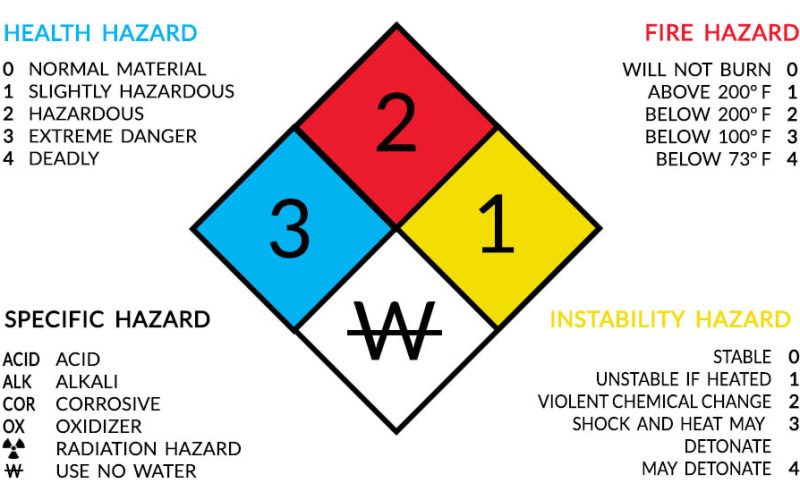Introduction
In today’s business landscape, safety and compliance are not optional—they are essential. Whether you run a small business or a large corporation, adhering to regulations is crucial for maintaining a safe working environment. One of the most important areas of compliance involves hazardous materials. These materials, which can include chemicals, gases, and waste products, pose significant risks to employees, customers, and the environment if not handled properly. But why is hazardous material compliance so essential for every business?
In this article, we will explore the reasons why hazardous material compliance is critical for businesses of all sizes. We’ll discuss its impact on workplace safety, legal requirements, environmental responsibility, and how compliance can protect your company’s reputation.
What Are Hazardous Materials?
Before diving into the specifics of compliance, it’s important to understand what qualifies as a hazardous material. Hazardous materials (often referred to as hazmat) are substances that can pose a risk to human health, safety, and the environment. These materials are categorized into different classes, including:
- Chemical Hazards: Substances that are toxic, flammable, corrosive, or reactive.
- Biological Hazards: Bacteria, viruses, or other infectious agents.
- Radioactive Materials: Substances that emit harmful radiation.
- Physical Hazards: Materials that can cause physical harm, like sharp objects or certain machinery.
These materials can be found in a wide range of industries, including manufacturing, healthcare, construction, agriculture, and more. If mishandled, these substances can cause serious harm to people, wildlife, and the environment. This is why hazardous material compliance is so important.
The Importance of Hazardous Material Compliance
1. Ensures Workplace Safety
Workplace safety is the number one priority when dealing with hazardous materials. Without proper safety measures and procedures, hazardous materials can lead to accidents, injuries, and even fatalities. Compliance with safety regulations ensures that businesses provide a safe working environment for their employees by:
- Proper Labeling and Signage: Hazardous materials must be clearly labeled with hazard warnings. This includes color-coded labels and safety data sheets (SDS) that provide critical information on handling, storage, and disposal.
- Training and Education: Employees who work with hazardous materials must undergo regular training. This ensures they understand the risks associated with the materials they are handling and how to respond in case of an emergency, such as a spill or exposure.
- Personal Protective Equipment (PPE): Compliance with safety standards often includes providing employees with the necessary protective gear (e.g., gloves, goggles, respirators) to prevent exposure to hazardous substances.
By following these guidelines, businesses significantly reduce the risk of accidents and ensure that their employees can work safely.
2. Compliance with Legal and Regulatory Requirements
One of the most compelling reasons to ensure hazardous material compliance is to avoid legal consequences. Many countries, including the United States, have strict laws governing the handling, transportation, and disposal of hazardous materials. These laws are enforced by agencies such as the Environmental Protection Agency (EPA), the Occupational Safety and Health Administration (OSHA), and the Department of Transportation (DOT).
Non-compliance can lead to severe penalties, including:
- Fines: Regulatory agencies can impose hefty fines on businesses that fail to comply with hazardous material handling and disposal regulations.
- Lawsuits: If hazardous materials cause harm to employees or the public, businesses can face lawsuits, potentially resulting in substantial financial damages.
- Business Shutdowns: In extreme cases, violations of hazardous material regulations can lead to a suspension of business operations until safety measures are put in place.
By adhering to hazardous material compliance standards, businesses can avoid these legal risks and continue to operate without interruption.
3. Environmental Responsibility
Businesses have a responsibility not just to their employees but also to the environment. Improper handling and disposal of hazardous materials can lead to contamination of air, water, and soil, causing long-lasting damage to ecosystems and wildlife.
Some examples of environmental hazards include:
- Chemical Spills: A hazardous chemical spill can contaminate water sources, harming local wildlife and potentially affecting entire ecosystems.
- Air Pollution: The release of toxic fumes into the air can harm both human health and the environment.
- Soil Contamination: Improper disposal of hazardous waste can lead to contamination of the soil, which can affect plant life and enter the food chain.
By complying with hazardous material regulations, businesses can minimize their environmental impact and contribute to a cleaner, safer planet. This not only protects natural resources but also helps to preserve the company’s reputation as a responsible corporate citizen.
4. Protecting Your Business Reputation
In today’s competitive market, reputation is everything. Customers, partners, and investors are more likely to work with businesses that demonstrate a commitment to safety, environmental responsibility, and compliance with regulations.
Failure to comply with hazardous material safety standards can damage a company’s reputation in the following ways:
- Negative Publicity: News of a hazardous material accident, spill, or violation can spread quickly, leading to negative press coverage that damages your company’s public image.
- Loss of Trust: Clients and partners may hesitate to do business with a company that has a history of safety violations or environmental harm.
- Consumer Concerns: Today’s consumers are more concerned than ever about the environmental impact of the products they purchase. A company’s failure to comply with hazardous material standards can drive customers away, who may turn to competitors with better safety and environmental records.
Conversely, businesses that demonstrate a commitment to compliance often enjoy a boost in customer loyalty and brand value.
5. Cost Savings in the Long Run
While ensuring compliance with hazardous material regulations may require an upfront investment in training, safety measures, and equipment, it can save businesses a significant amount of money in the long run. Here’s how:
- Avoidance of Fines: Complying with hazardous material regulations helps businesses avoid fines and legal penalties.
- Reduced Insurance Premiums: Insurers may offer lower premiums to businesses with strong safety records and a commitment to compliance.
- Fewer Workplace Accidents: By preventing accidents and injuries, businesses can avoid costly workers’ compensation claims and medical expenses.
- Long-Term Cost Efficiency: Proper handling and disposal of hazardous materials can prevent costly environmental cleanups and lawsuits.
By investing in compliance, businesses protect their bottom line while ensuring that they operate safely and responsibly.
How to Ensure Hazardous Material Compliance
- Conduct Regular Risk Assessments: Regularly assess the types of hazardous materials used in your business and ensure that all safety procedures are up to date. This includes checking for any new regulations that may apply to your industry.
- Stay Informed About Regulations: Laws regarding hazardous materials are constantly evolving. Ensure that you stay informed about changes in local, state, and federal regulations. You can do this by subscribing to industry newsletters or working with regulatory consultants.
- Provide Ongoing Training: Safety training should be an ongoing process. Employees must be regularly trained on how to handle hazardous materials and how to respond in emergencies. This includes refresher courses and updates whenever new materials or safety practices are introduced.
- Maintain Proper Documentation: Ensure that all hazardous materials are correctly labeled and that safety data sheets (SDS) are easily accessible. This documentation should be regularly updated to reflect changes in the materials you use or the regulations governing them.
- Work with Experts: If your business handles large quantities of hazardous materials, it may be beneficial to work with a safety consultant or compliance expert. They can help you set up systems to ensure ongoing compliance with all regulations.
Conclusion
Hazardous material compliance is not just a legal obligation but a critical aspect of running a safe and responsible business. It ensures the safety of your employees, protects the environment, safeguards your company’s reputation, and helps you avoid costly fines and legal penalties. By implementing effective safety protocols, staying informed about regulatory changes, and prioritizing ongoing training, businesses can ensure they are fully compliant with hazardous material laws. Ultimately, compliance is not only good for the business but also for the community and the planet.












